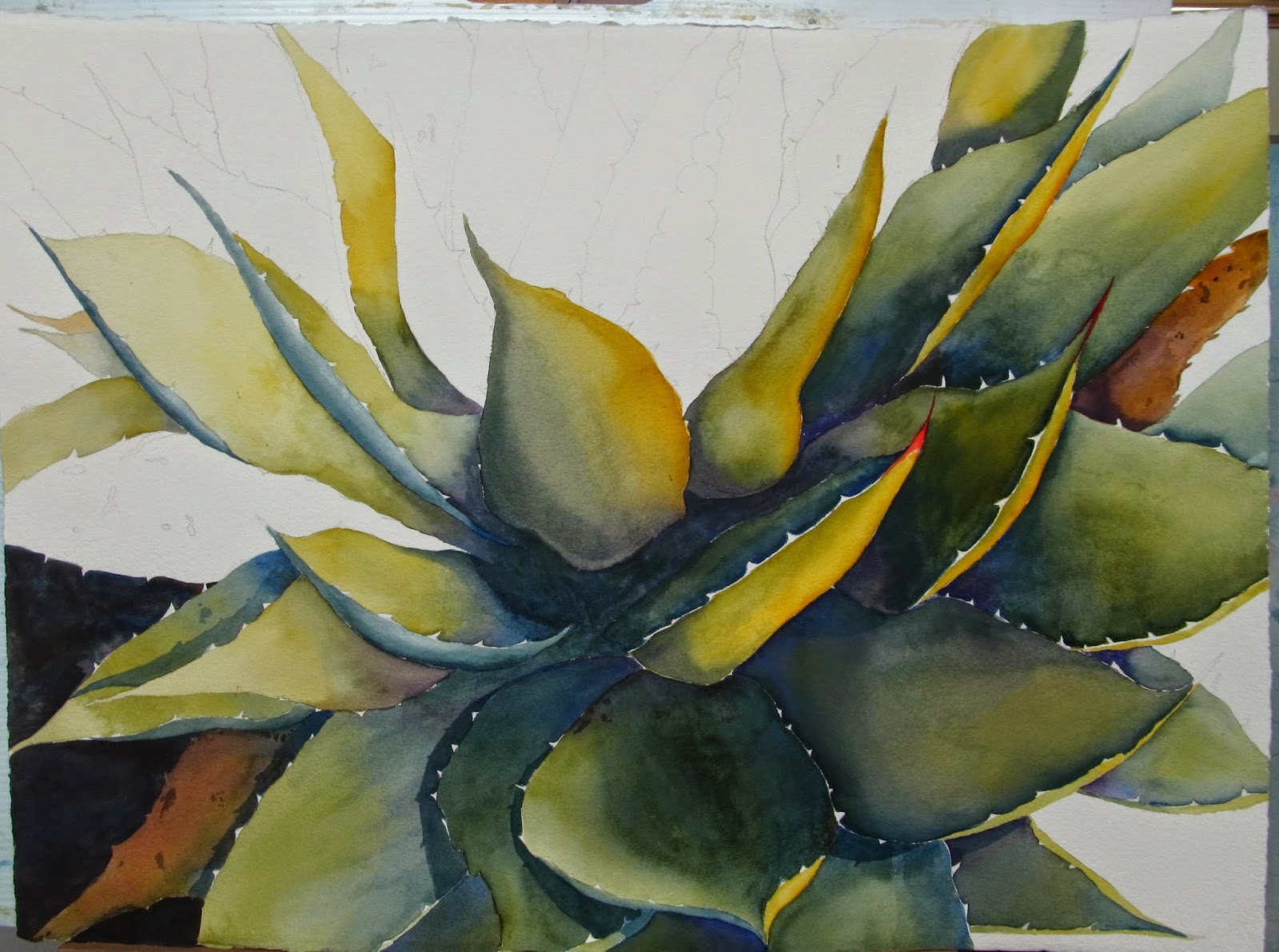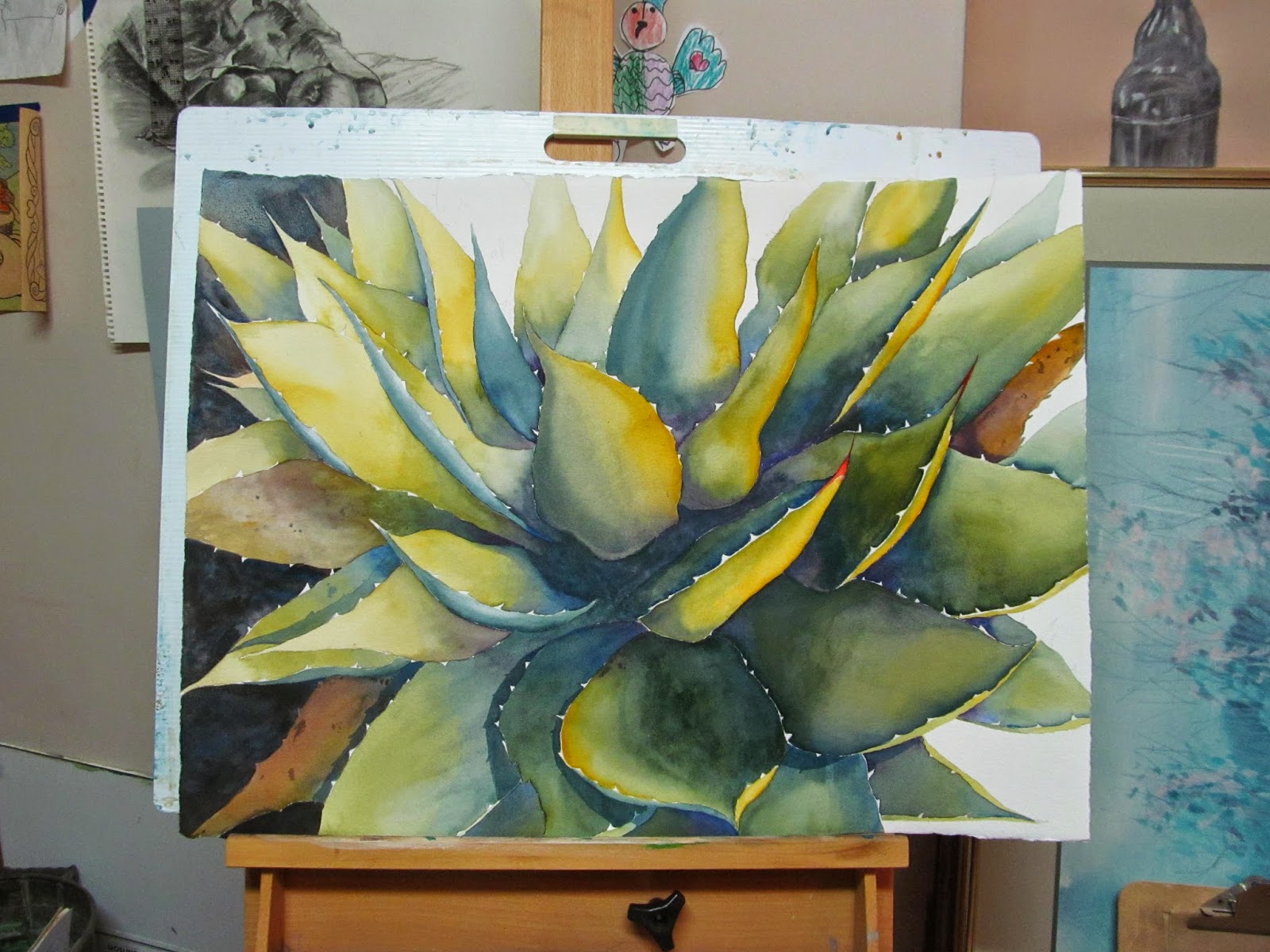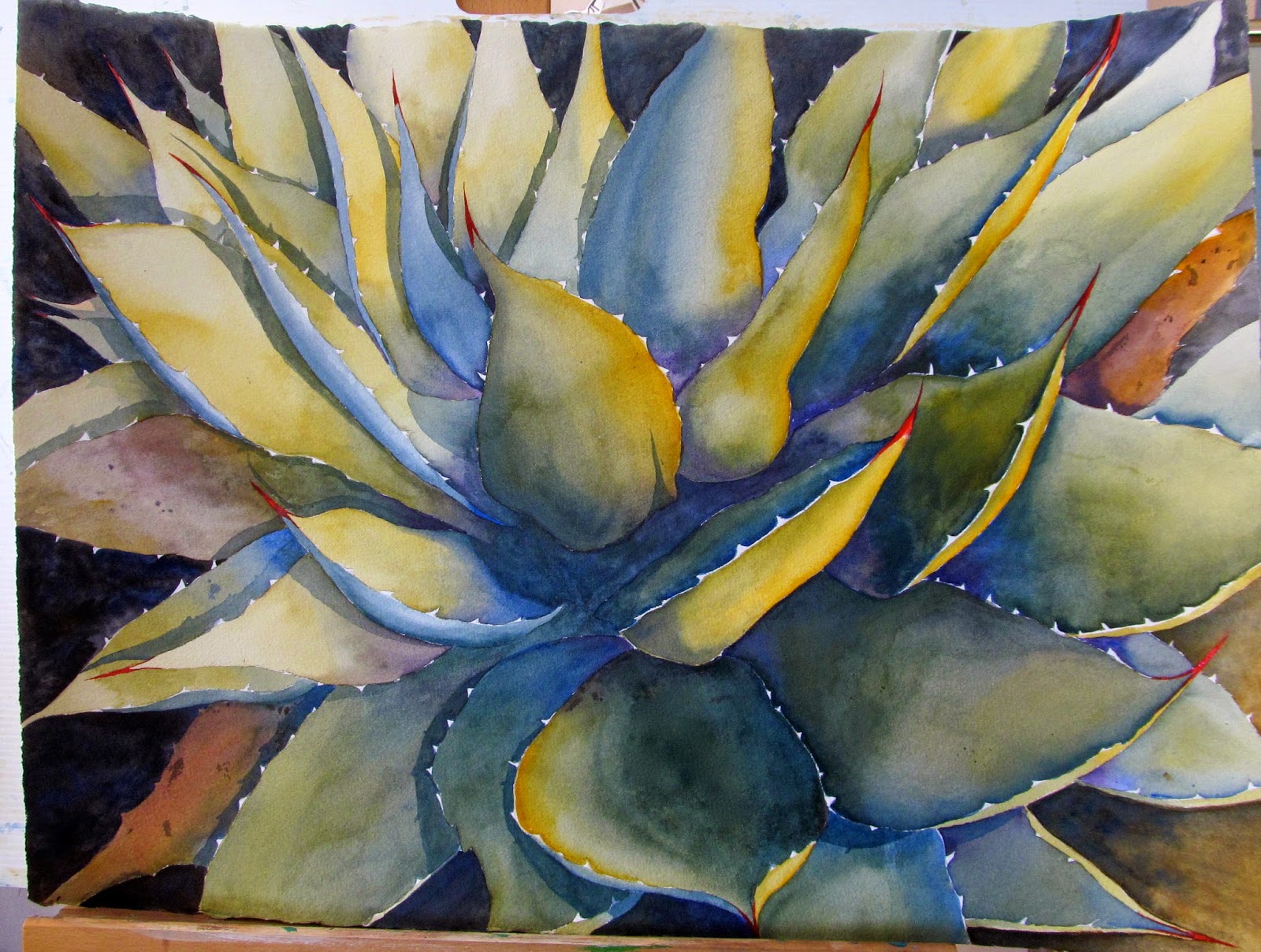I have a rule: Finish every painting. No matter how badly it's going. Blech.
This brings us to the agave painting I began recently and posted here:
http://whatercolorit.blogspot.com/2014/09/color-study-with-sedimentary-color.html
It is now finished. I am tired; it was a fight to the end. Why some paintings nearly paint themselves and some have to be fought to the ground, I don't know, but this one has been rough.
I may be able to use it for my show, I may put it away in the dark and look at it again in a year or two!
Lessons learned from this project:
- Sedimentary paints don't blend and flow together like stainers
- Rough paper with these pigments will keep them from blending even more
- To look their best, sedimentary paints want to be used as transparently as possible.
 |
| I wanted this to look like it was in the darkness, next to a bright light source, so I mixed the darkest paint I could for the edge shapes. |
 |
| I realized at this point that with a light source close by, there would be shadows cast on some of the leaves. Figuring out where was actually fun. |
 |
The finished piece. There has been so much water soaked into this paper that I'm not sure if I'll ever get it to lay flat again!
Near the Fire, Watercolor on paper, 22" X 30" |
It's time to start another painting. What colors and paper to use will keep my mind chewing away for the afternoon. One thing though is already decided, there will be NO New Gamboge in it!!

























